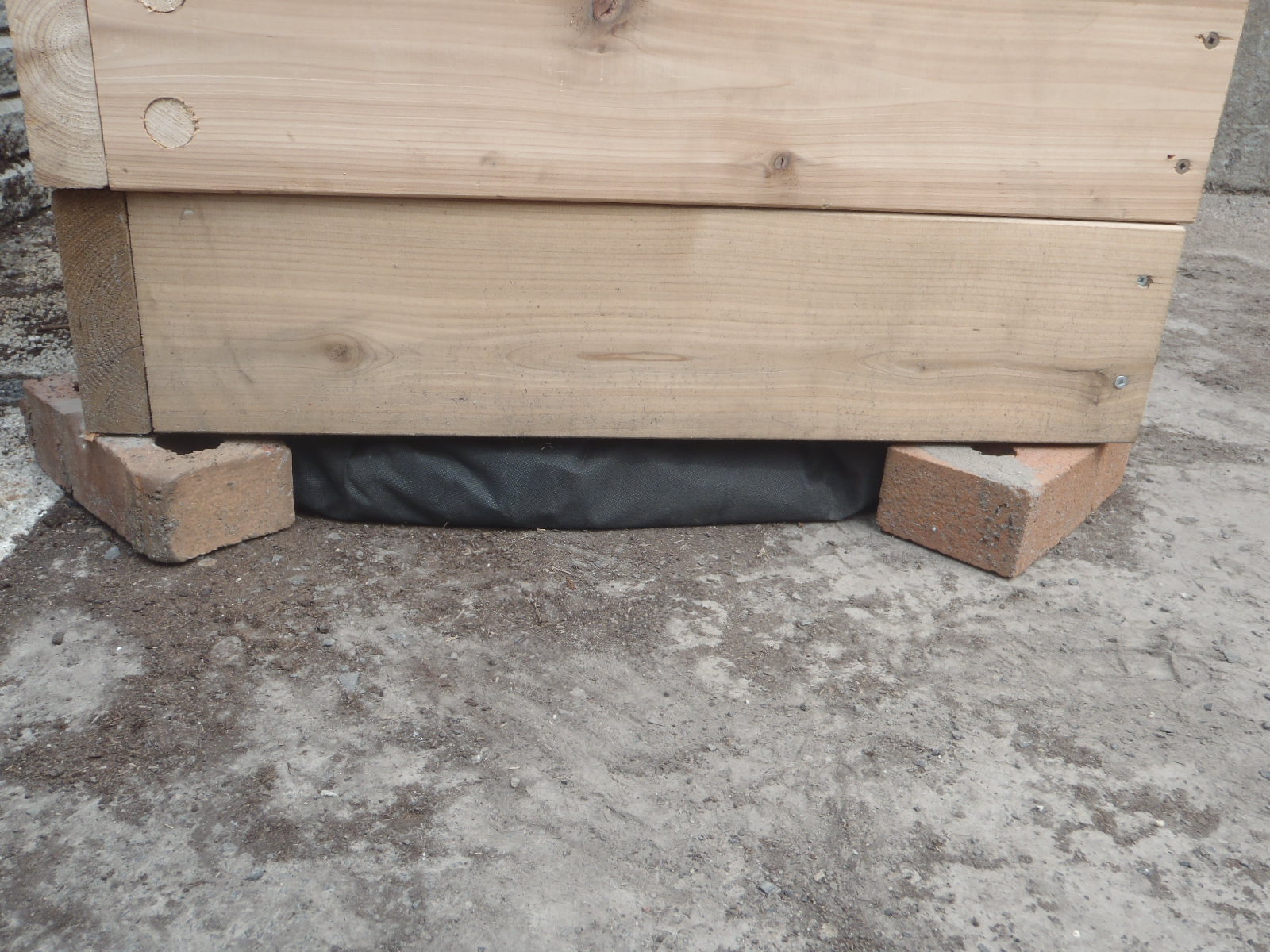You've built your potato box (properly). Your potato seedlings are ready. Then what?
The best time to plant potatoes is from mid-March to mid-May, when the soil has reached a temperature of 16°C. Plant the each potato seedling about 12-14 inches (30-45 cm) apart. If you're working with a potato box, add enough soil to completely bury the potatoes. In a garden, you can dig a trench (or individual holes) about 30 cm deep and put just enough soil to completely bury the potatoes (don't fill the trench or holes to the top yet). In both cases and if working with potato seedlings, make sure the shoots are facing upward, and make sure not to break them while burying the seedings.
Make sure that the potatoes are planted in a full sun area (at least 6 hours of sun a day), and keep the soil moist but not waterlogged. If the soil gets too dry, there will be hollow areas inside the potatoes, but if it's too wet, the potatoes will rot. Potatoes should be planted in a soil with good drainage (sandy to loam, clearly not clay), otherwise they will most certainly rot.
Once the plants have reached about 30 cm in height, add 20-25 cm of soil around the plants, either from between the rows in a garden, or from elsewhere if using a potato box. If in a garden, the initial "hilling" will most likely consist of completely filling back the trench or holes to ground level. Hill again once the plants reach another 20-30 cm in height. Repeat until plants are dead, in September or October when it gets colder (if they die earlier, it may be because the potatoes are rotting).
Potatoes do not compete well with weeds, so keep their environment weed free throughout the season. You may also want to remove any flowers if the plant blossoms.
Here's how our planting went:
Since our potato box will be sitting on concrete all summer, we added some left-over rocks we were using for our containers at the bottom of the potato box. We added about 10 cm. That should not be necessary if the potato box is a few centimeters above the ground, or if it's placed in the garden. In fact, we're not even sure if it was necessary in our case, since our soil is of good quality and should drain easily, but we did it anyway.
We then added another piece of geotextile over the rock layer and filled the potato box with about 15-20 cm of soil. We'll probably keep on putting geotextile to prevent the soil from touching the wood, as wood-soil contact may accelerate wood decomposition.
Then we dug the holes and placed the seedlings.
And finally filled the holes.
Some of our seedlings seemed to have started developing leaves at the end of some shoots, so we left those sticking out of the ground. It might not have been a good idea, as three days later the leaves seem to be dying. We're not sure if that's because it's been rainy and the soil is too wet, if the quite cold temperature shocked the seedlings and/or the leaves during transplantation, if we should have buried the whole seedlings, or if it doesn't matter. Time will tell.






No comments:
Post a Comment